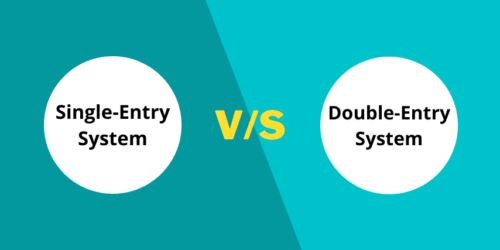DOUBLE-ENTRY BOOKKEEPING VS. SINGLE-ENTRY BOOKKEEPING
Double-Entry Bookkeeping vs. Single-Entry Bookkeeping: Understanding the Key Differences
When it comes to managing financial records, businesses have two primary options: double-entry bookkeeping and single-entry bookkeeping. Each method has its own set of advantages and disadvantages, making it essential for business owners to choose the approach that best suits their needs. In this article, we’ll delve into the key differences between these two accounting methods to help you make an informed decision for your business.
Double-Entry Bookkeeping: The Gold Standard of Accuracy
Double-entry bookkeeping is a comprehensive accounting method that offers a higher degree of accuracy and transparency in recording financial transactions. This approach is based on the fundamental principle that every transaction involves at least two accounts – a debit and a credit. By following this principle, double-entry bookkeeping ensures that the accounting equation (Assets = Liabilities + Equity) is always balanced.
In this method, every financial transaction is recorded twice: once as a debit and once as a credit, which are entered into different accounts. This system not only minimizes the risk of errors but also provides a clear audit trail for each transaction. Double-entry bookkeeping is highly recommended for businesses of all sizes, especially those with complex financial operations or compliance requirements.
Single-Entry Bookkeeping: Simplicity and Limited Insight
Single-entry bookkeeping is a simpler accounting method that involves recording each financial transaction only once, typically in a single column. This approach is often used by small businesses, freelancers, and sole proprietors who have straightforward financial activities and do not require extensive financial reporting.
While single-entry bookkeeping is easier to implement, it lacks the accuracy and accountability provided by double-entry bookkeeping. The absence of a built-in mechanism to ensure that debits and credits are in balance can lead to errors and make it difficult to track financial discrepancies. As a result, this method may not be suitable for businesses that need accurate financial reporting or undergo audits.
Choosing the Right Method for Your Business
The choice between double-entry and single-entry bookkeeping largely depends on the complexity of your financial activities and the level of accuracy and insight you require. If your business deals with numerous transactions, has multiple accounts, and is subject to regulatory requirements, double-entry bookkeeping is the recommended choice. It provides the necessary structure to maintain accurate records and facilitates financial analysis.
On the other hand, if your business is small-scale, has a limited number of transactions, and prefers simplicity over comprehensive reporting, single-entry bookkeeping might suffice. However, keep in mind that as your business grows, you might need to transition to double-entry bookkeeping to ensure accurate and reliable financial management.
In Conclusion
Double-entry bookkeeping and single-entry bookkeeping offer distinct approaches to managing financial records, each with its own benefits and drawbacks. While double-entry bookkeeping provides accuracy, accountability, and comprehensive reporting, single-entry bookkeeping offers simplicity and is suitable for businesses with minimal financial complexity. Assess your business’s needs, growth potential, and regulatory requirements to make an informed decision that aligns with your financial management goals.


